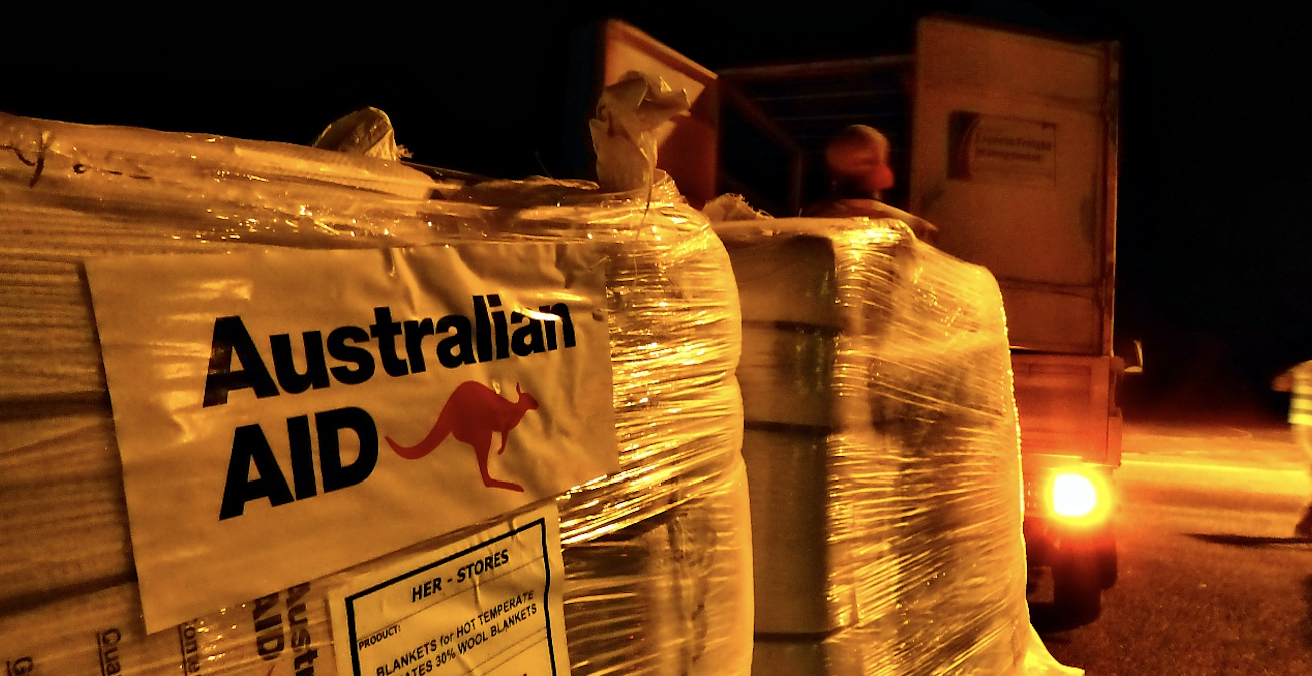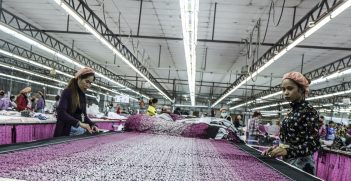Gender Empowerment in the Health Aid Sector: Locating Best Practice in the Australian Context

Despite Australia’s record funding in gender equality and empowerment in overseas development assistance in recent years, much more needs to be done to boost gender equality as a mainstream objective in the health aid sector. Sara E Davies will launch her new book, Containing the Contagion: The Politics of Disease Outbreaks in Southeast Asia, at the Australian Institute of International Affairs in Canberra on 2 April.
In 2017, the Australian Government announced the creation of the Indo-Pacific Centre for Regional Health Security. In the same year, the Australian government investment in gender equality and empowerment in overseas development assistance reached the highest percentage ever recorded in Australian aid history. However, the health sector (excluding reproductive and family planning) has the lowest percentage of aid projects where gender equality is being mainstreamed as a primary objective. In Australia’s largest health aid sector investment, the Indo-Pacific Centre for Health Security, there is a disconnect between the Australian government’s gender empowerment objective and its relative absence of gender inclusion policies and objectives. The solution is to prioritise gender inclusion across all health aid sector programming. Specifically, to study the lessons learned from Australia’s gender inclusion practices in the women’s health aid sector programming and to integrate them into the areas of health research and investment in emerging infectious disease outbreak response.
Gender inclusion in the health security initiative for the Indo-Pacific
In October 2017, the then Foreign Minister Julie Bishop announced the largest strategic health funding investment by her government, to date, with an AUD $300 million investment over five years in the Health Security Initiative for the Indo-Pacific. The initiative was announced as a strategy to “combat health threats that cross-national borders” that, with the creation of the “Indo Pacific Centre for Regional Health Security,” will support and “strengthen health systems and invest in research and partnerships to mitigate the social and economic risks of a major disease outbreak.”
The four investment priorities listed under the Initiative are: promoting global and regional cooperation; catalysing international support; capitalising on Australia’s strengths; and accelerating access to new products. However, if we use the Global Health 50/50 report as our guide to look for evidence of gender-responsive planning and women’s leadership in the initiative itself, we may observe that none of the four programs’ investment focus (to date) have any references to women’s representation or gender equality provisions. Furthermore, the Australian Government’s Health Security Initiative is not meeting the Department of Foreign Affairs and Trade’s (DFAT) own aid effectiveness policy test—there is no mention of gender equality within its strategic priority and no mention of how the program will address gender equality.
The Australian government was aware of the lack of gender investment in regional health security programs over the last decade. In 2017, the Australian government published a report by the Office of Development Effectiveness. In this report, it was found in addition to low and middle-income countries still falling short of capacity investment necessary to strengthen health systems in the event of an international public health emergency, “the conceptual understanding and program implementation and outcomes still need to be strengthened” when it comes to understanding the link between gender, emerging infectious disease (EID) exposure and vulnerability. The report states that despite finding “good” examples of gender analysis and research within “some” of the country-level and health initiative programs, there was “limited evidence of implementation or results.” The Office of Development report recommended that “to prevent this problem from re-occurring, DFAT’s future investments in regional health security should take a more rigorous approach to ensuring gender differences and their effects are addressed.”
On the basis of the open source material available for the $300 million regional health security initiative, it does not appear that these recommendations have contributed to shape or inform gender responsive and gender inclusive strategic objectives, funding, or implementation in the Health Security Initiative for the Indo-Pacific.
The siloing of health issues and gender inclusion is demonstrated in the fact that outside of health security programming – albeit the largest recipient of health sector aid – Australia is delivering gender responsive and gender inclusive health aid programming. It is thus concerning that this important work is not being linked in with the health security initiative. In 2007, the Australian government had been delivering the Sexual and Reproductive Health Program in Crisis and Post Crisis Situations (SPRINT) program in partnership with the International Planned Parenthood Federation. To date, this program has assisted “over 890,000 people with sexual and reproductive health services in crisis-affected places – preventing avoidable maternal deaths, reducing unplanned pregnancies, preventing illness and deaths of newborns and reducing rates of Human Immunodeficiency Virus (HIV) and other diseases.” SPRINT has received $26 million AUD since its inception in 2007, and the 2016–2019 pledge is $9.6 million. This is compared to the $300 million earmarked for health security program from 2017 to 2022.
The SPRINT program is a targeted health assistance program, but it illustrates the opportunity and necessity to develop an understanding of the relationship between gender and disease surveillance, gender and risk communication, gender and trust in health systems – all vital components of disease outbreak response and containment. SPRINT manages relationships in high-risk environments every day – the knowledge and skills learned from engaging with a community of unpaid health care labourers (women) is translatable to environments, such as over-burdened clinics and hospitals during a pandemic. A health crisis, particularly in a low capacity setting with poor governance structures, creates the kind of fear, mistrust and violence seen in humanitarian settings. This program provides expertise and knowledge on “the needs of women and girls in crisis through the provision of basic health and protection services and supplies,” which is vital to translate to a health emergency situation. Moreover, it provides an opportunity to think inclusively and holistically in health funding programs – to include community-level NGOs and health care workers and connect their EID health system strengthening delivery to gender-responsive programming.
There are further lost opportunities when it comes to linking health system strengthening and research with gender-responsive programming. There is the Gender Equality Program within the Department that engages with local women civil society organisations, the Water for Women Initiative within the health programming sector and the Health Innovation program dedicated to improving in-country data collection. These programs provide important opportunities for the health security initiative to intersect with gender-responsive programs that would serve to improve health system strength and resilience in the Indo-Pacific region – and address the risk to livelihood and liberty faced by those at greatest risk during health crises. We saw this risk too clearly during the Ebola outbreak and we still, today, have little knowledge of how disease outbreaks in our region such as H5N1 and Dengue affect gender relations within communities.
The absence of gender analysis and research on outbreak events in the region is a lost opportunity for the Australian government to demonstrate leadership in promoting the relationship between gender equality, gender equity and resilience in the face of humanitarian disasters and emergencies. The Ebola outbreak in West Africa revealed that the disease itself and the health consequences of the outbreak affected women and men differently. Women were more likely to be displaced due to the crisis, unable to attend school or engage in formal employment. The crisis also affected women’s health outcomes differently to men. Estimates vary but possibly up to a third of women in Sierra Leone and Liberia, during the crisis, were unable to receive treatment during the crisis for prenatal and postnatal maternity care, malarial treatment and access to HIV antivirals. Women were vital in providing informal care roles within villages and urban areas, and they were depended upon to instigate and maintain the WASH (water and sanitation) procedures in many communities affected by Ebola. The health security initiative could become a regional hub for providing a gender-sensitive risk analysis of poverty alleviation strategies, risk communication strategies and social infrastructure tailored to different communities within the Asia Pacific that is gender sensitive, gender responsive and intersectional.
Delivering on holistic gender mainstreamed approaches
The health sector is one of the lowest funded priorities within the Australian aid budget. Despite the low percentage of funding, the Australian government has made long-term funding commitments that have linked significant health programs to a gender equality target. The Australian Government has strong gender inclusive programming in place in the WASH, SPRINT and Health Innovation programs. Notably, however, the largest health sector investment to date – the Indo-Pacific Regional Health Security Initiative – has few (if any) gender inclusive or gender responsive targets in its strategic objectives, funding and organisation. Despite the recommendation of the Office of Development Effectiveness that any future investment by Australian government in EID programming must ensure a more “rigorous approach to ensuring gender differences and their effects are addressed,” there is very little evidence of this advice being followed in any of the four health security initiative programs. It is no coincidence that in Australia’s health aid programming the two areas where the gender equality targets are met is the WASH program and the humanitarian (sexual and reproductive health) programs. These programs are vital and have been essential in addressing health discrimination practices against women seeking access to sexual, reproductive, and sanitation needs in the region. However, the lessons, engagement, and research from these programs are siloed from Australia’s largest health sector aid investment, the EID aid program. This must end. EID response requires mainstreaming gender engagement and gender responsive programs into its technical and programmatic programs. More effort needs to be dedicated to ensuring the health security initiative leads the way in ending global health silo behaviours that have given rise to gender gaps and lack of gender diversity in health sector aid. More effort could be directed to link the health security programs with existing Australia health aid programs to deliver on holistic gender mainstreamed approaches to health system strengthening in the Asia Pacific region.
Sara E Davies is associate professor and Australian Research Council (ARC) future fellow in the School of Government and International Relations, Griffith University, Australia.
This article is an extract from Davies’ article in Volume 72, Issue 6 of the Australian Journal of International Affairs titled “Gender Empowerment in the Health Aid Sector: Locating Best Practice in the Australian Context.” It is republished with permission.





